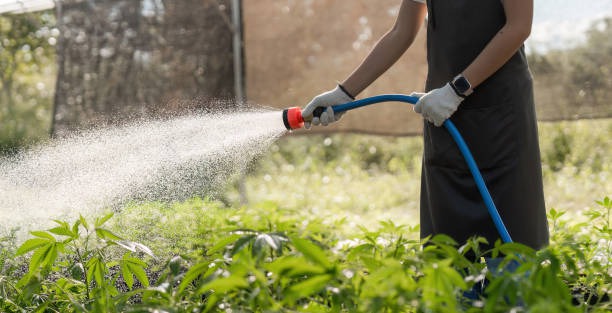Keeping your lawn lush and green while managing a tight water budget can feel daunting. But with some thoughtful strategies, you can enjoy a vibrant landscape without spending a fortune on water bills. Let’s explore ten awesome tips that can help you cut down on costs and still keep your yard looking fabulous.
1. Understand Your Lawn’s Needs
Every lawn is unique, and understanding what yours specifically needs is the first step toward efficient watering. Different grass types, soil conditions, and climates require different watering schedules. Research your grass type and local weather patterns to determine how often and how much you should water.
Test the Soil Moisture
The simple screwdriver test is an easy way to gauge how wet or dry your soil is. Push a screwdriver into the ground; if it goes in easily, your lawn doesn’t need more water.
2. Water at the Right Time
Timing is everything. Watering during the cooler parts of the day, such as early morning or late evening, reduces evaporation. This allows your lawn to absorb more water, making every drop count.
Early Morning Advantages
Watering in the early morning is generally better because the air is cooler and the winds are calmer. This prevents water from quickly evaporating and reduces fungal diseases, which can occur when a lawn stays wet overnight.
3. Utilize Smart Technology
Technology can be your best friend in reducing water consumption. Smart irrigation systems and timers can automate watering schedules, ensuring your lawn gets the right amount of water without wasting resources.
Install Smart Sprinklers
Smart sprinklers adjust watering schedules based on weather forecasts and soil moisture levels. Some even connect to smartphone apps for easy control, letting you monitor your watering system from anywhere.
4. Embrace Landscaping Techniques
Certain landscaping techniques can naturally keep your lawn more water-efficient. These changes might be small, but they can make a significant difference in water usage.
Group Plants with Similar Water Needs
By clustering plants with similar water requirements, you can provide more precise watering. This not only helps reduce waste but keeps plants healthier and thriving.
5. Collect Rainwater
Why let rainwater go to waste? Setting up a rainwater collection system can significantly reduce your reliance on tap water. It’s a great way to engage in sustainable landscape watering, capturing and storing rainwater for use during dry periods.
Use Rain Barrels
Simple installations like rain barrels can be placed under downspouts to catch and store rainwater. They are affordable, easy to set up, and perfect for irrigating lawns and gardens.
6. Improve Your Soil
Healthy soil retains water more effectively, reducing the need for frequent watering. Invest in enhancing your soil’s health for long-term savings and better lawn quality.
Mix in Organic Matter
Incorporating organic materials like compost improves soil structure and increases its water-holding capacity. This means you’ll need less water to keep your lawn green.
7. Adopt Mulching Techniques
Mulching is an unsung hero in water conservation. It helps retain soil moisture, prevents erosion, and even suppresses weeds.
Choose the Right Mulch
Organic mulches like wood chips or bark are excellent at retaining moisture. As they decompose, they also add nutrients back into your soil, further enhancing its quality.
8. Avoid Overwatering
It might be tempting to drench your lawn in hopes of keeping it vibrant, but overwatering can be wasteful and harmful. Learning to gauge when your lawn truly needs watering is vital.
Watch for Signs
Your lawn will show signs when it needs water, such as wilting or changing its natural green hue. Familiarize yourself with these cues to avoid unnecessary watering.
9. Consider Water-Efficient Grasses
If you’re open to replanting, consider grasses that are naturally more drought-resistant. They require less water, which can dramatically cut down your water bill.
Explore Native Grasses
Native grasses are adapted to local climates and typically need less water and care. Exploring this option could lead to considerable savings in both water use and maintenance.
10. Stay Informed on Local Resources
Many areas offer resources to help homeowners manage water use more effectively. For example, checking out water loading sites in Ontario or similar local resources might provide useful insights or materials that can aid your efforts.
Participate in Community Programs
Many communities offer incentives, rebates, or programs for water conservation. Stay informed and take advantage of any available opportunities to save water and money.
Final Thoughts
Maintaining a lush lawn without breaking the bank on water bills is entirely achievable with mindful strategies. By understanding your lawn’s specific needs, optimizing watering times, and using smart technology, you can significantly reduce water consumption. Implement landscaping techniques, collect rainwater, and enhance soil health to boost efficiency further. Avoid overwatering by recognizing your lawn’s cues and consider planting drought-resistant grasses. Stay informed about local resources and participate in community programs for additional support. With these practical tips, you can enjoy a beautiful, green lawn while conserving water and saving money.



